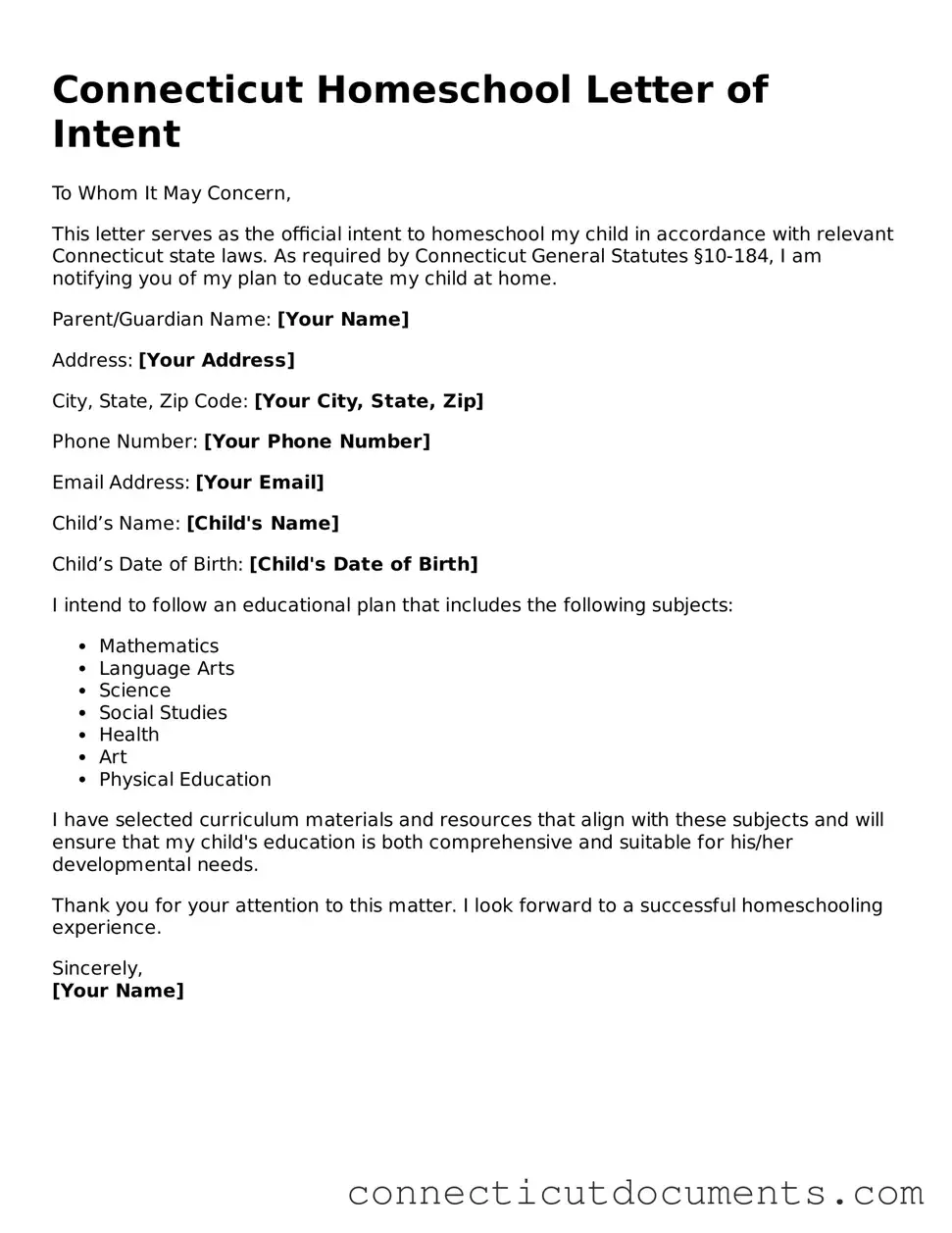What is the Connecticut Homeschool Letter of Intent?
The Connecticut Homeschool Letter of Intent is a formal document that parents or guardians must submit to their local school district to notify them of their intention to homeschool their child. This letter serves as an official declaration that you are choosing to educate your child outside of the traditional public school system.
Who needs to submit the Letter of Intent?
Any parent or guardian who plans to homeschool a child in Connecticut must submit this letter. It is required for children between the ages of 5 and 18 who would otherwise be enrolled in a public school. This includes children who have never attended school and those who are currently enrolled.
When should I submit the Letter of Intent?
You should submit the Letter of Intent at least 10 days before you start homeschooling. This allows the local school district to process your request and ensures that you are compliant with state regulations. If you are withdrawing a child from public school, it’s best to submit the letter as soon as you decide to homeschool.
What information is required in the Letter of Intent?
The letter should include your child's name, age, and address, as well as your name and contact information. You may also want to include a brief statement expressing your intent to homeschool. While the state does not provide a specific format, clarity and completeness are essential.
Is there a specific form I need to use for the Letter of Intent?
Connecticut does not require a specific form for the Letter of Intent, but it must be in writing. You can create your own letter or use templates available online. Just ensure that all necessary information is included.
What happens after I submit the Letter of Intent?
Once you submit the Letter of Intent, the school district will acknowledge receipt of your letter. They may not respond directly unless they have questions or require additional information. After submission, you are free to begin homeschooling your child.
Are there any consequences for not submitting the Letter of Intent?
Failing to submit the Letter of Intent can lead to complications. Your child may be considered truant, which can result in legal issues. It’s important to comply with this requirement to ensure that your homeschooling journey starts on the right foot.
Can I change my mind after submitting the Letter of Intent?
Yes, you can change your mind about homeschooling after submitting the Letter of Intent. If you decide to enroll your child in a public or private school, simply notify the school district of your decision. There are no penalties for changing your educational path.
Where can I find more information about homeschooling in Connecticut?
For more information, you can visit the Connecticut State Department of Education website. They provide resources, guidelines, and additional information about homeschooling laws and requirements in the state. Local homeschooling groups can also be a great source of support and information.
